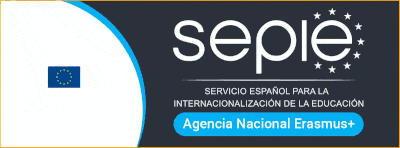The Writing for Inclusion Project is organized around two Intellectual Outputs to attain its core objectives:
O1. Learning platform
The main aim of this intellectual output is to enable in-service teachers to foster inclusion, either in their native or in their foreign language classes, through digital storytelling. Additionally, this output intends to guide and assist teachers to implement the project in their school contexts.
This intellectual output offers an online approach to learning within the field of “Care” and Inclusion in Education. The modular approach of the course will allow in-service teachers to focus on their specific needs, depending on their background knowledge and teaching context. As for the platform, it is also innovative because it will be a sustainable tool for practitioners and stakeholders wishing to share experiences, policies and practices in the co-creation and delivery of solutions for inclusion through digital storytelling.
The online modules will be the backbone of training for in-service teachers. These materials will cover the main topics such as “Care in Education”, the process of writing, the use of narrative structures and animated resources for inclusion, and these modules will be elaborated by all the partners according to their area of expertise. The learning platform is expected to provide practitioners with the adequate space and resources to approach inclusion through digital stories in their classrooms, and pupils will benefit from a program intended to connect technology with e-writing as a tool to cherish diversity.
O2. Digital Resources and School Toolkit
Animation is a dynamic representation that breaks down the barriers of learning through simplifying complex concepts and ideas.
The main aim of this Intellectual Output is to provide both teachers and students with a myriad of animations and instructional materials combined in a database, where the collection can be sorted and searched in a flexible manner. This core objective will be complemented with a “school toolkit” that will enable teachers to guide children in their using of animation as a visual resource. Thus, this output plans to create animated materials, which will be used for digital storytelling in “Care in Education” at a school level with young and very young learners and a tutorial to help educators make the most of those resources.
The multimedia materials will address the main objectives of the projects in terms of raising awareness on the importance of diversity and promoting “Care” in the classroom and beyond the school as well. Animation will thus become an innovative digital resource to illustrate inclusive concepts, to teach writing notions and to justify narrative choices to children in their process of story elaboration.
Ultimately, a school toolkit will be put together as a final delivery once the project is completed, and it will include a visual guide so as to aid participants (in-service teachers and pupils) through all the steps needed to create an inclusive digital story. This online pack will cover the technical processes of using the animation toolkit and will give suggestions on how to implement it in the classroom. This tutorial will also include a sample of a digital animated story for school use.
The project Writing for Inclusion (2020-1-ES01-KA201-081827) has been funded with support from the European Commission. This website reflects the views only of the author, and the Commission cannot be held responsible for any use which may be made of the information contained therein.

